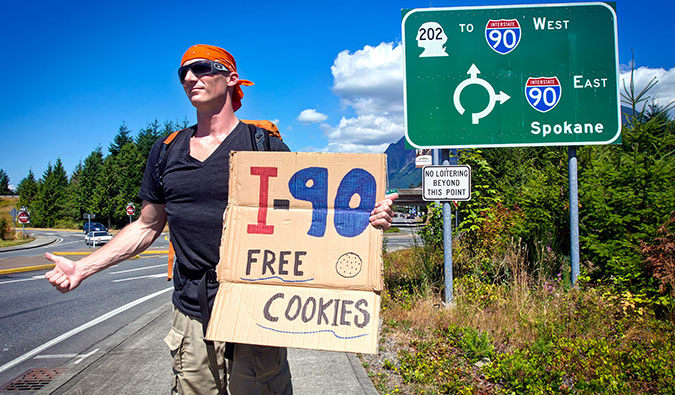
My
first experience with hitchhiking was in Belize. Back in 2005, I
hitchhiked the entire country, as it was the most common way locals got
around. If they were doing it, why not me? It was a lot of fun and much
easier and safer than I thought it would be. Since then, I’ve hitchhiked
around a handful of countries and met some interesting (and not so
interesting) people. Hitchhiking is still a popular and common way many
people worldwide get around, but it evokes a lot of fears and concerns,
especially among Westerners. Today, Matt Karsten from expertvagabond.com shares his experience hitchhiking around the United States and advice about how you can safely do it too. Enter Matt.
It
was a chilly and overcast day on the Oregon coast when I nervously
stuck my thumb out on the side of Route 101. For the next 20 minutes,
drivers passed me over and over again — most with looks of disgust on
their faces. But I kept on smiling. Would anyone stop for me? Was I
wasting my time? I wasn’t completely sure.
Eventually my
persistence paid off, and a massive orange pickup truck screeched to a
stop in a cloud of dust. A wave of excitement rushed over me as I jogged
up to meet CJ and her dog, Trigger. My first ride!
Yet this was just the first of many such pleasant surprises on my journey.
CJ
wasn’t going far, only to the next town. When I asked why she stopped,
she explained that I looked relatively normal and that she’d also done
some solo hitchhiking in Montana when she was younger. This would become
a common theme over the next five weeks. Drivers will often stop for
you to pay back kindness they received in the past.
Before I left
on my mission to hitchhike across the United States from coast to coast,
I was told that no one picks hitchhikers up anymore. They said that it
was dangerous these days, and that the golden era of hitchhiking was,
sadly, over.
But after five weeks, 3,500 miles, 36 rides (from
both men and women), a motorcycle, a boat, an airplane, a freight train,
and a tractor trailer, I can say that those people were wrong. If
you’ve always dreamed of hitchhiking but are unsure of how to do it,
where to begin, and how to stay safe, here are 14 tips to hitchhike
smart:
Be Confident
Always look drivers in the eye and
smile as they pass. Not in a crazy axe-murderer way, but in a friendly
and personable way. Smiling is very important. Pretend the next car is a
friend who is planning to pick you up. Try waving hello or holding your
gaze expectantly as they drive past. You really only have a second or
two to make a positive impression.
Think of it as a drive-by job interview, with only your eyes,
appearance, and body language to guide the other person’s decision.
Smiling for three hours straight in the sun or rain despite a constant
stream of rejection is not easy, but you’ll get better at it. If you
look nervous or scared, you will attract the wrong type of people, so be
confident.
Look Presentable
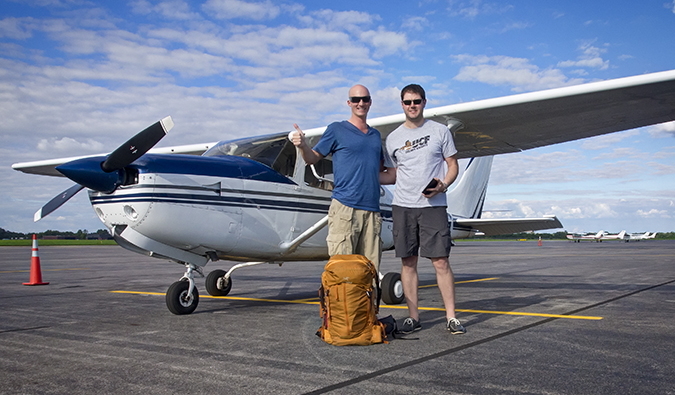
No one wants to pick up a lazy, stinky-looking hobo. Dress in light or bright clothes. Avoid wearing black if you can. Don’t wear sunglasses (people need to see your eyes), and keep your hands out of your pockets. Don’t smoke, drink, or sit down on the side of the road.
Additionally,
many drivers pick up people who look similar to themselves. I was
having a difficult time getting a ride on the border of Colorado and
Kansas until I bought myself a cheap cowboy hat! Soon after that
strategic purchase, a trucker couple from rural Tennessee pulled over
and proceeded to drive me 1,200 miles over the course of two days,
country music playing all the while.
Choose a Good Spot
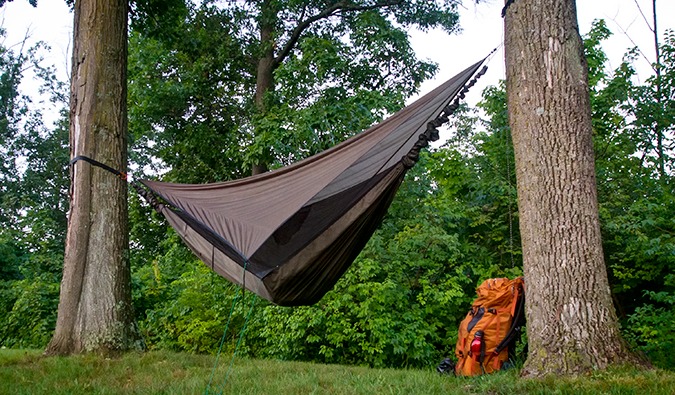
Cars will not stop for you if they can’t do it safely. Interstate on-ramps are great because cars aren’t moving very fast and there’s usually room to pull over. Other good locations include intersections with stoplights or a stop sign and gas stations. The longer a driver can get a good look at you, the better. Keep an eye out for shady areas with protection from the sun, too. If you have Internet access on your phone, Google Maps in satellite view will show you where the best on-ramps are.
Hitchhiking
out of big cities can be very difficult, and sometimes using public
transportation to get to the outskirts is your best option. There are
some places where it is almost impossible to get a ride, such as spots
near sensitive government facilities (employees are forbidden to pick
people up), prisons, or neighborhoods with high crime rates.
Make Conversation
There
are many reasons why people pick up hitchhikers. Maybe they’re bored
and want to listen to fun travel stories. Maybe they were once
hitchhikers and want to share their experience (and karma) with you.
Maybe they’ll try to convert you to Christianity/Islam/Scientology.
Maybe they need help staying awake on a long drive.
Providing good conversation
is how you pay these people back for their generosity. It can also lead
to a free lunch, drinks, or maybe even an offer to host you for the
night. Ed the yacht builder was the last ride on my cross-country
journey, and he spent his whole afternoon giving me a personal tour of
the Maryland coast before taking me out for dinner and drinks at his
favorite seafood restaurant.
Be Prepared
Always pack enough food and water to last a day, in case you get stuck in the middle of nowhere.
I like to bring a few bananas, apples, tortillas, tuna, refried beans,
and maybe a package of cookies to share. A filtered water bottle will
let you safely drink from rivers and ponds. Take a couple of
dark-colored permanent markers to create signs, some sunscreen, a first
aid kit, warm clothes, and a rain jacket.
A USB car charger and
external battery for your mobile phone is a good idea too. They’re
perfect for listening to music, checking Google Maps, or calling for
help in an emergency. A lightweight camping hammock or bivy sack will
help you save money on accommodations. I frequently camped in the woods
on the side of the road or behind churches on my trip.
Use a Cardboard Sign
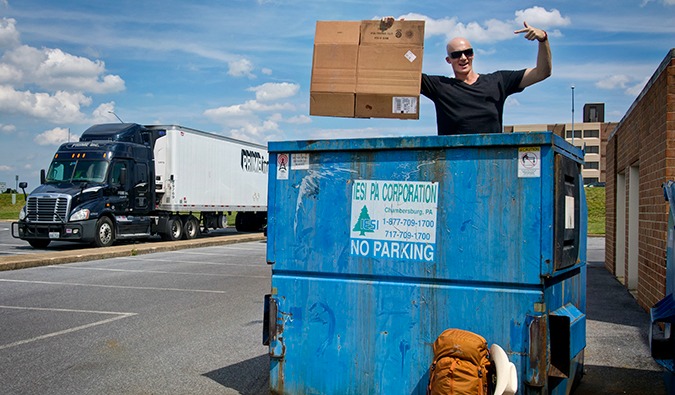
A simple cardboard sign indicating a town nearby helps a lot. Keep it short and write in large capital letters with a Sharpie marker. It needs to be readable at a distance from a fast-moving vehicle. Use destinations that are relatively close (within 20–50 miles), and you’ll be more likely to score rides. You can then negotiate longer ones inside the vehicle if the driver is going farther in your intended direction.
Funny
signs work well too. A few successful ones I used were: “Free Cookies,”
“Won’t Kill You,” and “Rabies-Free Since June.” That last sign was
funny enough that Dan, a retired theater actor and pharmaceutical
executive, had already driven to the next exit when he changed his mind
and turned around to come get me!
You can find cardboard for signs
at any gas station or fast-food restaurant, either by asking inside or
by opening up the dumpster in the back.
Choose Your Ride Carefully
You
are under no obligation to get into every car that stops for you. Is
the driver in a good mood? Are they looking you in the eyes? Are they
sober? How many people are in the car? If you don’t feel comfortable
accepting a ride, thank the driver and say no. Make up an excuse if you
have to. Pretend to be sick, or explain that you’d rather wait for a
longer ride. Trust your gut instincts.
On my own trip, I only turned down one ride. I was in a sketchy
neighborhood (prostitutes were walking around in the middle of the day),
and the vehicle that stopped was a truck packed with four young guys,
with the smell of weed pouring from the windows. They were also only
headed to the next exit. Odds are good I would’ve been fine, but the
situation didn’t feel right and I decided to wait for a better
opportunity.
Use Common Sense
Always wear your seatbelt,
and if the person starts driving erratically, stay calm and polite but
ask to be let out at the next safe pullover spot. Avoid hitchhiking (or
picking up hitchhikers) at night. Not only is it very difficult to stop
on the side of the road safely after dark, but it’s also much harder to
see pedestrians at night. Not to mention, people are much more likely to
commit crimes under the cover of darkness.
Stay Positive
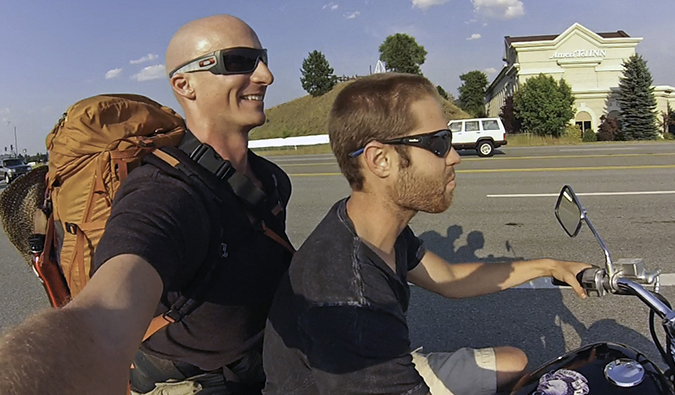
Hitchhiking is definitely a mental challenge. You’re putting yourself out there in public while engaging in an activity that isn’t considered mainstream. You’ll be judged by everyone who passes you, often in a negative way. People will laugh, flip you off, yell, honk, rev their engines, or maybe even throw things.
Stay in Control
Predators
prey on weakness and insecurity. Don’t make yourself an easy target.
Dress conservatively and steer sexual topics to something unsexy. Make
it crystal clear you’re only interested in getting to your destination,
and nothing else. Maintain an aura of confidence.
Keep your
valuables on or near your body so if you must escape quickly, you don’t
lose them. Avoid putting your bag in the trunk if possible, so the
driver can’t take off before you can grab it. Snap a quick photo of the
back of the car with your phone before you get in, then send it to a
friend or your Twitter account. Once inside the car, find a moment to
call a friend and tell them where you are and where you’re headed so the
driver can hear you doing it.
Avoid Arguments

Try to avoid talking to your driver (or hitchhiker) about politics, religion, race, or other controversial subjects, at least until you get to know each other a bit and can gauge how they might react. You don’t want to provoke them into becoming angry or emotional while behind the wheel. If they attempt to start a conversation on these topics, try to change the subject or give boring/vague answers to their questions until they lose interest or you feel comfortable talking about them. This is how I responded to Captain Kitty Litter’s overly racist remarks and questions. Even though I disagreed with his views, I just kind of nodded along and let him talk.
Hitchhike with a Friend
If it’s
your first time hitchhiking and you’re particularly nervous about it,
try hitching with someone else who’s done it before. This is a fantastic
way to learn the ropes and get more comfortable. While it might be more
difficult to get someone to stop for two hitchhikers, it will always be
a bit safer. I’m not saying not to go alone, but if you’re worried
about safety, hitchhiking with a friend might be a good way to start
out.
Expect to Wait
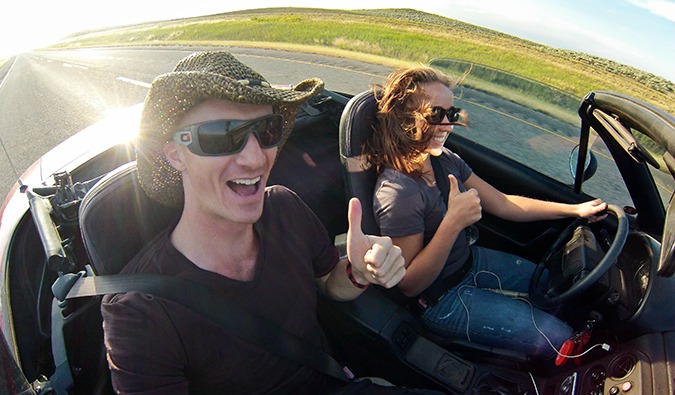
My average wait time while hitchhiking across the United States was about an hour. But there were some days when it took 2–3 hours or more. You must be prepared to wait in one spot for at least a few hours. However, there were also many times when I was picked up after only 15 minutes. You just never know how long it will take.
If you’re in a
particularly bad spot, it might take days to get picked up, which
happened to me once outside Denver. I spent two nights in a motel
waiting to get out of there. Are you getting sick of waiting? Maybe take
a break and go do something else to break up the time. Having camping
gear with you can help in these situations too. Walking a few miles to
the next exit or catching a taxi to a better location are also options.
Protect Yourself
You will almost certainly never need to use it, but packing a weapon of some kind to help with self-defense
is always a good idea. I like to bring pepper spray along with me. When
Captain Kitty Litter started telling me about the time he threw another
hitchhiker out of his moving car, I subtly placed one hand in my pocket
where pepper spray was hidden (just in case). Luckily I never needed to
use it!
My experienced hitchhiker friend Shannon carries a stun
gun openly on her belt (this can be illegal in some states). However, a
simple pen shoved into the ear or eyes of an assailant should work in a
pinch too. In my opinion, a knife should not be your first choice for
self-defense unless you’ve been trained to use it, as it can easily be
turned against you if the situation takes a turn for the worse. Please
note that using a weapon is an absolute last resort — only use it when
communication doesn’t work and you honestly fear for your life.
Is Hitchhiking Safe?
Hitchhiking
has become progressively more rare over the years. Irrational fears
about hitchhiking are brought on by paranoid horror stories promoted
aggressively by the news and then turned into movies by Hollywood. Bad
news is what sells, so that’s what we’re exposed to. I’m still waiting
for CNN to do a story about my successful hitchhiking adventure, but I’m
not holding my breath. I had a wonderful time, met great people, and
nothing bad happened. It’s not sensational enough to be considered news.
Based
on my own experience and after listening to other people’s hitchhiking
stories, it’s likely that some weirdos will pick you up. But rarely will
it result in a dangerous situation. Out of 36 different rides during my
own adventure, I had maybe two or three “odd” (socially awkward)
drivers.
I was told countless times that hitchhiking would be
dangerous. While it’s smart to be prepared for worst-case scenarios, in
reality you don’t have to worry about these horror stories too much.
Most of the people I met while hitchhiking were friendly, fascinating,
and full of entertaining tales. But that doesn’t mean you should let
your guard down.
While hitchhiking is not nearly as dangerous as
some people make it out to be, there is risk involved. If you choose to
engage in this activity, you are accepting those risks. Crimes are
committed against hitchhikers from time to time, as well as against
drivers (although much less frequently).
If you ever feel
threatened or uncomfortable once you’re already in the vehicle, first
ask the driver to stop and let you out at the next exit or gas station.
Make up an excuse if you want to. If the driver still fails to stop,
remind them that you sent a photo of the car and plate number to
friends. In an absolute emergency, you can always grab the steering
wheel or handbrake and cause a small accident. Remember, only use these
techniques as a last resort, when you genuinely fear for your life. Even
small accidents can kill you or someone else. It’s not something to
take lightly.
One Final Legal Note
Hitchhiking in the United States is legal. The confusion lies with the United States Uniform Vehicle Code. The law states:
“No person shall stand in a roadway for the purpose of soliciting a ride.”
Sounds illegal, right? Yes — until you read its definition of “roadway:”
“That
portion of a highway improved, designed or ordinarily used for
vehicular travel, exclusive of the sidewalk, berm or shoulder even
though such sidewalk, berm or shoulder is used by persons riding
bicycles or other human powered vehicles.”
What does that
mean? It’s illegal to stand directly on the road (for obvious safety
reasons), but standing on the side of the road, the shoulder, or a
sidewalk is fine.
Each state also has its own laws, though, and a
few specifically ban hitchhiking. These include New York, Nevada, New
Jersey, Pennsylvania, Utah, and Wyoming.
However, getting caught
hitchhiking in these states doesn’t necessarily mean you’ll go to jail.
Police officers may stop and question you, give you a warning, or fine
you. In fact, hitchhikers may experience this from authorities even in
states where it is technically legal, due to ignorance of the law or
boredom.
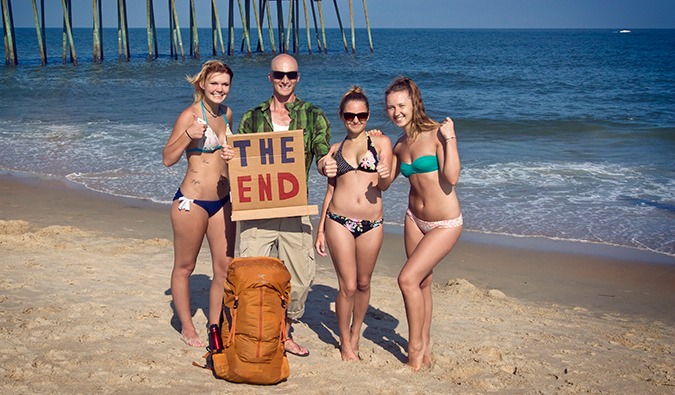
Hitchhiking will definitely be a challenge. But it will also open your mind, build your confidence, teach you patience, and introduce you to new friends. There’s something magical about the open road and the uncertainty that comes with sticking out your thumb with no plans.
You
could meet a friendly schoolteacher who’s never picked anyone up or an
ex-con with hilarious stories to share. Or maybe you’ll meet the
inventor of the Ultimate Pancake Sandwich. I was picked up in fancy Land
Rovers, an airplane, a boat, a motorcycle, and a car held together with
duct tape. You don’t know who will stop, if anyone will stop, or how
your day will unfold when someone eventually does. That’s what makes
hitchhiking so special. It’s the unknown.
It’s an absolute roller
coaster ride full of emotions: thrilling one minute, then completely
discouraging the next. But in the end, hitchhiking might just be one of
your most memorable or rewarding travel experiences, as it has been for
me. I’ll never forget the feeling of accomplishment I experienced when
jumping into the Atlantic Ocean at the end of my long journey.


No comments:
Post a Comment